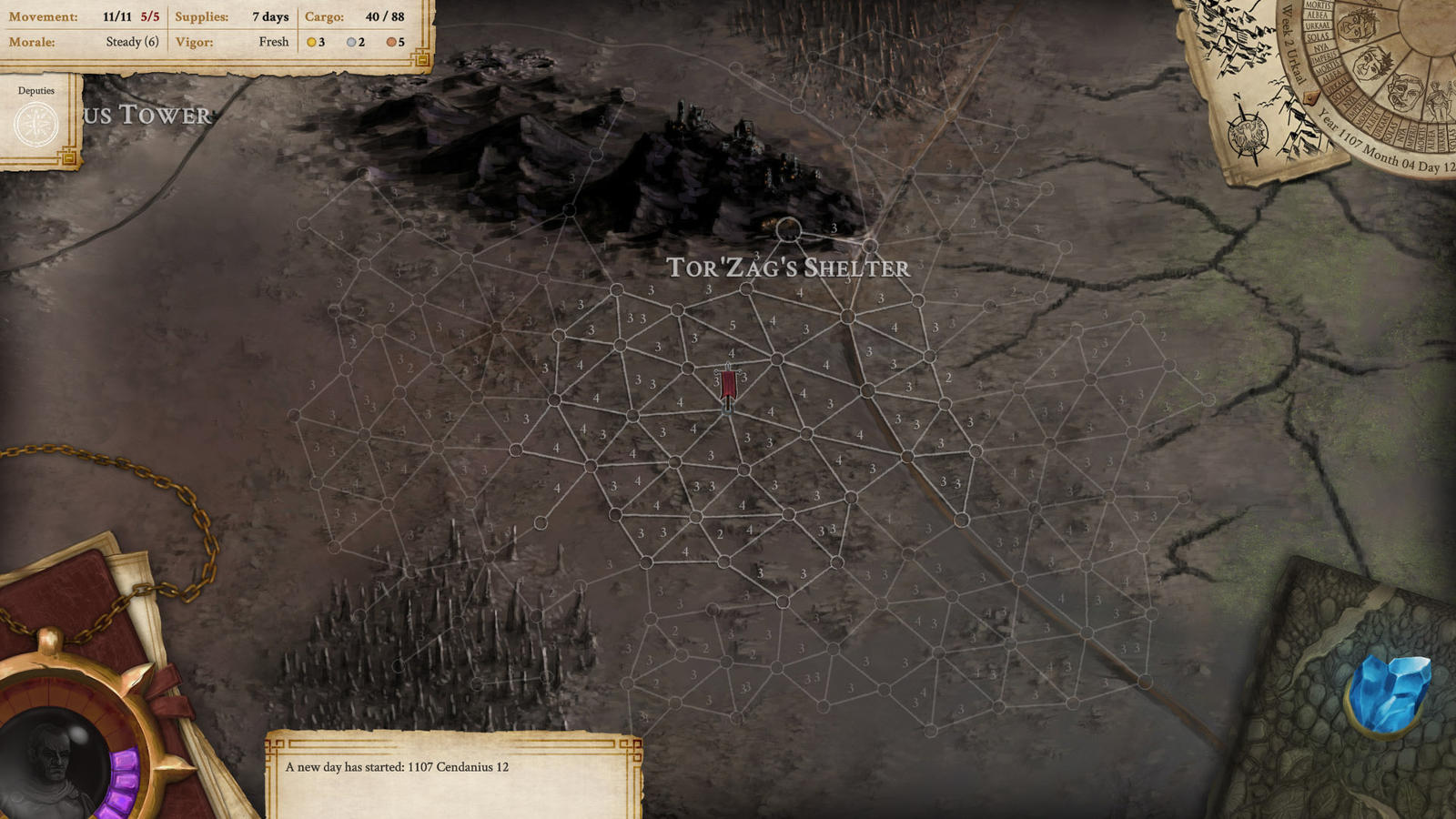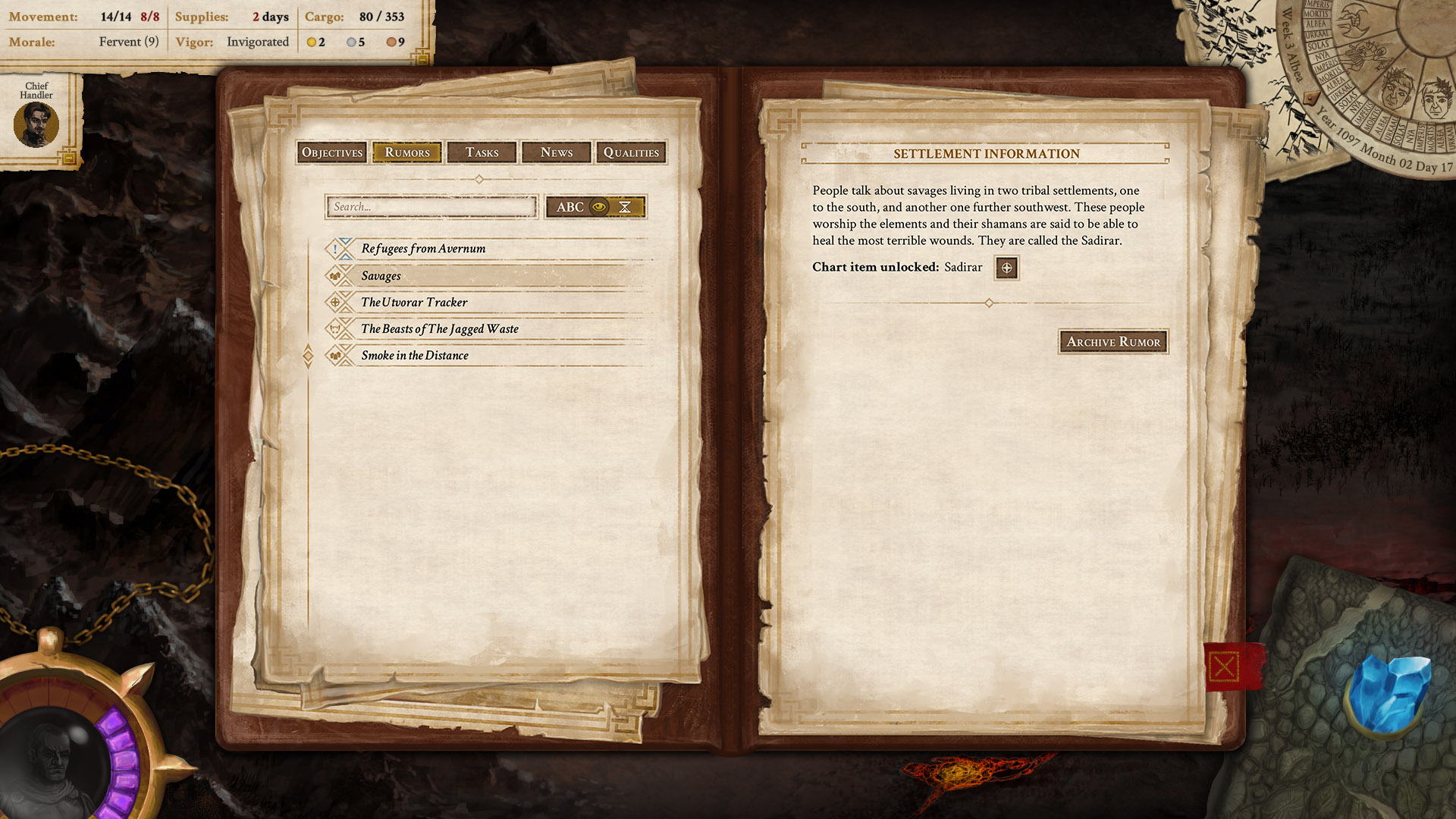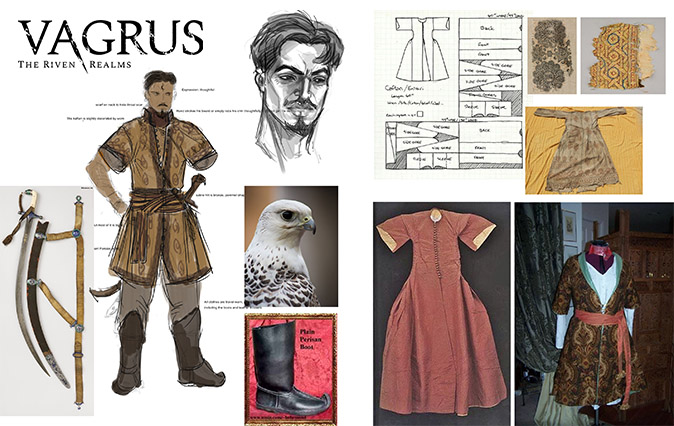
As we are getting closer and closer to releasing the first playable build of the main campaign of Vagrus, it is perhaps a good time to talk a bit about the differences between the open world campaign and 'Pilgrims of the Wasteland'. The focus of this is going to be narrative design and stories but there are going to be implications on gameplay as well.


Another crucial game mechanic that is being added to Vagrus as we are writing this is a system of Rumors. Rumors are short entries in your Journal that are meant to guide players to content and unlock locations on their Chart in order to help them plan journeys and find places. We have come to the conclusion during playtesting that not only do we need to differentiate these Rumor entries from your Objectives in the Journal but we also need to separate them entirely and move them to a different pane. As evident from this, Rumors have undergone quite a lot of change since their original conception.


Well, we have just passed another major milestone in our content creation progress.
As mentioned in our post last week, with our Prologue ready from a content perspective, our writers have been already working on the Early Access stories for Vagrus.
In the Prologue we have well over one hundred thousand words worth of story and lore coming together from Events and Codex entries. Actually, even a bit more since the Narration and Tutorial texts are coming through another source and so are not included in the above numbers. Those two make up over four thousand words on top.

As we've previously hinted at, parts of the game Vagrus has a narrator in the person of Agos the wanderer. An older man and a vagabond, Agos stumbles upon the player one evening on the road and begins telling stories of his travels (if you let him, that is). One such story is the Prologue that you can play through to be introduced to the world and gameplay at the same time, essentially playing through the story Agos is telling.


In Character design - Part 1 we talked about the types of characters in Vagrus, focusing especially on Companions and their roles in the game. Now it's time to move onto the topic of what exactly goes into the graphic design phase of these characters.

The Codex is a tool in Vagrus that lets players read up on the world, its inhabitants, locations, lore, characters, and whatever else that has an entry. The idea was to provide players who wish to know more a place to find it and to allow you to look up things you may have forgotten; but to make this absolutely voluntary. If you do not wish to read these entries, you can still absolutely play Vagrus, as this is basically additional fluff.

It is finally time to look at the stats and systems related to the vagrus, that is, YOU, the player's character in the game (aka Leader). You can interact with the Leader UI screen (opened by clicking the leader's medallion in the bottom left) in order to manage said stats and improve your character.


As a strategy-RPG hybrid, Vagrus is pretty heavy on UI, so a lot of our effort goes into designing a functional and appealing UI for various elements of the game. Today, we'll take a look at our progress with the 'main UI', which is on the campaign map. This is what the player will see the most of and it's UI has to be a gateway to several key game elements.
